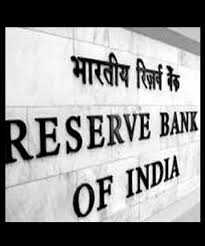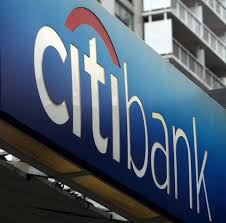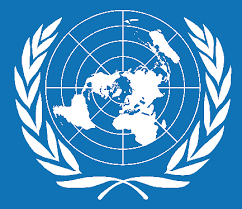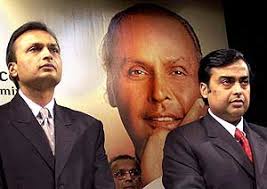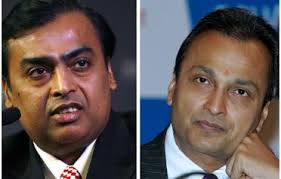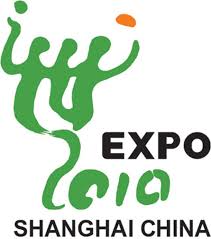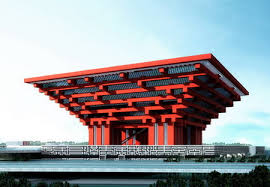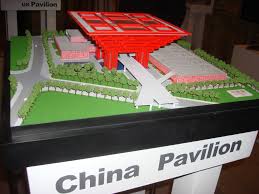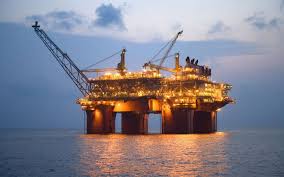
Source:TOI:May 7, 2010, 12.21am IST
What is the Krishna-Godavari (KG) basin?
As the name implies, this refers to the area broadly enclosed by the deltaic basins of the two major rivers in Andhra Pradesh Krishna and Godavari. It includes part of the Bay of Bengal into which these rivers drain. The area has been identified as one of India's biggest oil and gas fields, several times the size of Bombay High. Onland, the KG basin has an area of about 28,000 sq km, while the offshore area is estimated at 21,000 sq km till a depth of 200m and another 18,000 sq km between 200m and 3000m.
How is Reliance Industries involved in the KG basin?

Under the government's New Exploration and Licensing Policy (NELP), various blocks in identified oil and gas fields were offered to private operators on lease for exploration and production. RIL won the bids for 12 such blocks in the KG basin in 2000. Under NELP, private operators sign a production sharing contract (PSC) with government, which sets out terms and conditions under which they operate their lease, including the share of revenues that would accrue to the government. The PSC for block D6, which is at the heart of the current dispute, was signed between RIL, the government and Niko, which is partnering RIL, in April 2000.
How is the Anil Ambani group involved?
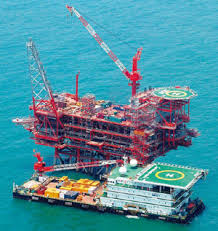
When the Reliance group was still a unified entity with both brothers sharing management responsibilities, RIL had announced in 2003 that group company Reliance Energy Ltd (REL) would be setting up a gas-based power plant at Dadri in western Uttar Pradesh, for which gas would be supplied from RIL's KG basin production. In 2005, however, the group broke up with each brother acquiring control of different business areas. While the oil and gas business went to elder brother Mukesh, Anil had control of the power business. As part of the division of the group, RIL was demerged and Reliance Natural Resources LTD (RNRL) was formed to act as a conduit for the gas from the KG basin to REL. All RIL shareholders were made RNRL shareholders, except that Mukesh's holding in the parent company was substituted by Anil in the new firm. Thus, RNRL was part of the Anil Dhirubhai Ambani group (ADAG).
What is the MoU often referred to?

In 2005, RNRL and RIL signed a memorandum of understanding (MoU) on the terms under which gas would be supplied for the Dadri project. This MoU specified that the price at which the gas would be supplied would be the same as the price at which RIL would supply gas to an NTPC project. NTPC had invited global bids for supply of gas in 2003 and RIL finally won the bid and was issued a letter of intent by NTPC in June 2004. The price quoted by RIL in its bid was $2.34 per mmbtu (million metric British thermal units).
So what's the dispute about?

RIL argues that the $2.34 per unit price is not applicable to its deal with RNRL for various reasons. First, gas prices had since the 2005 MOU risen sharply. Second, it has not concluded a deal with NTPC on that price, since it had some issues pertaining to damages it would have to pay in case of failure to supply the agreed quantity of gas . Hence, it says, there is no NTPC price to be followed as per the MOU with RNRL. Third, it says under the PSC signed with the government, the government has the final say on the price at which it can sell gas to third parties and in fact can even dictate to whom the gas should be sold.
RNRL contests each of these claims. It argues that international gas prices have historically been much higher than Indian prices and so that can't be a benchmark. Further, the bid price for the NTPC project must be followed under the MOU irrespective of whether or not RIL and NTPC have finalized their deal. Finally, it maintains that the government only has the right under the PSC to fix the price at which gas will be valued for the purpose of determining the government's share of revenues from the project. RIL, it insists, is free to sell its share of the gas at whatever price it decides.
Where did the price of $4.2 per unit come from?

In May 2007, RIL invited bids from various gas users like power and fertilizer companies and on that basis arrived at a price of $4.2 per, which was then approved by the petroleum ministry as a market-determined price. RNRL alleges that this was an eyewash and an orchestrated auction between small time users and that the ministry has been partisan towards RIL in the whole issue.
How did the government get involved?

When, after sustained pressure from RNRL, RIL sought approval of the government for the price of $2.34 per unit, the government refused. It said the price was not market-determined and in any case gas was a national asset and its allocation could not be decided by some private agreement between two brothers. ADAG points out that the ministry's stance in the matter which suits RIL's current position has been a feature since Murli Deora became the petroleum minister in 2006.
How are courts involved?
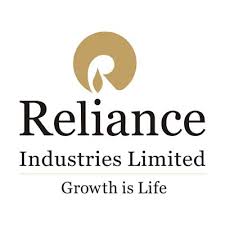
Following RIL's refusal to supply gas at the terms specified in the MOU with RNRL, the Anil group company went to the Bombay HC seeking an order to RIL to follow the terms of the MOU. The Bombay HC finally in June this year passed an order that RIL must renegotiate a deal with RNRL that would make suitable arrangements for supply of gas. It also added that the basis for such an arrangement must be the scheme of demerger agreed between the brothers in 2005. RNRL has now gone to the Supreme Court seeking a direction from the apex court that the HC order on renegotiation should be set aside and RIL should be asked to supply gas under the terms of MoU.
